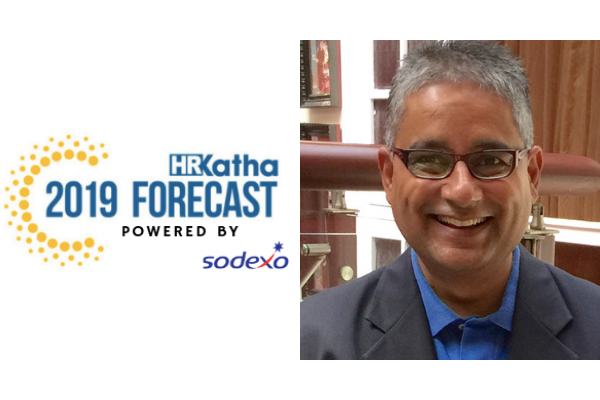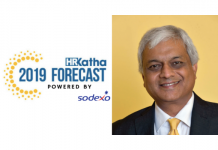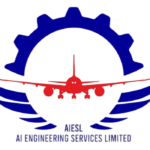More power to HR in 2019
I would rather think of this question as what more can HR do in order to influence business strategy. For this to happen, I would rather ask how much we have done to make the function more ‘scientific’ than it is today. The question is whether we can make people decisions with the same rigour as a business leader makes business decisions.
Sadly, HR must now play a game of catch-up because all other business functions, including production, marketing, finance and supply chain, shifted to a ‘scientific’ model long ago. It’s almost impossible to find a global firm with an HR function with the goal of ‘becoming scientific’. Having worked at Amazon for over seven years, the real news may be that there are probably just a few companies, including Amazon and Google, where HR is striving to make their function totally scientific, data driven and precise.
“The question is whether we can bring the same rigour to people decisions the same way a business leader makes business decisions”
Download the HRKatha 2019 Forecast – powered by Sodexo to read what the top 30 HR leaders predicts for the new year
So, what is the difference between a traditional HR mindset and scientific one? Traditionally, all HR functions have relied heavily on the use of past practices. Although these approaches were once the most effective, they are probably still used even though the business environment, the technology and even the workforce assumptions under which they were created may have changed dramatically. In contrast, ‘Scientific HR’ assumes continuous change, so it uses data and facts to shift towards the latest, most effective HR approaches continually.
Less is more: HR to cut steps and create more impactful and innovative initiatives
I would rather pose a question and ask how HR can directly impact business results. At Amazon, we said, “We manage HR as a business.” So, rather than simply ‘aligning with business goals’, continuing with the previous question, the scientific model focuses on HR actions and resources so that they produce the maximum direct, measurable impact on business results.
“Before you can credibly and effectively develop others, you should develop yourself first”
The two primary areas where HR can traditionally produce the highest business impacts include increasing the productivity of the workforce and improving the volume and speed of product and process innovation. Under this approach, HR focuses on solving broad strategic business problems (e.g., decreased sales, product development or missed deadlines) rather than tactical HR problems. And finally, under this model, HR problems and results are converted into their monetary impact on revenue (e.g., the retention efforts on salespeople allowed us to maintain INR 25 million in sales revenue). Reporting results in revenue impacting currency allows executives to quickly compare HR’s impacts with those from other business functions.
People- front in the Aviation Sector
At a time of great uncertainty and rapid change in many industries, aviation stands out as one of the fastest growing and most dynamic sectors in India, and broadly the global economy. With the industry landscape shifting constantly, the momentum of this change looks set to accelerate in size and scope, calling for a new generation of air transport leaders. To stay ahead of the game, airline CEOs are seeking HR support to think in possible scenarios and rapidly adapt their business models to changing market conditions while providing their organisations with clear guidance. Most importantly, they want to ensure that they have the right leadership qualities on board and that they adopt appropriate talent management practices.
“To be able to figure out what these inputs are that derive the outputs is key. Unless we do this now, future will tell how HR professionals failed in teaching machines to be unbiased”
Although continuity in leadership has proven to be a strong asset in the complex air transport industry in the past, there is now widespread belief that today’s market calls for a new type of leader. Indeed, a survey by global firm, Egon Zehnder, a few years ago, stated that most of their respondents saw a strong shift in leadership competencies against a background of severe competitiveness and accelerated change dynamics in the airline industry. Gaps in leadership competencies are perceived, for example, in areas such as change leadership or innovative thinking. To close these gaps, strengthening the internal talent pipeline through holistic, highly professional talent management as well as recruiting external top performers is widely considered a promising way of bringing fresh thinking and experience into the industry.
Developing new skillsets for the future workforce
I am reasonably sure that this can be commented on more profoundly by several other colleagues, but I wanted to think of this a bit differently. Rather than simply developing new skillsets, I pondered over how one can be more effective and become a mentoring and motivating manager.
Start with yourself – Before you can credibly and effectively develop others, you should develop yourself first. Otherwise, you may come across as a hypocrite not a mentor. Shaping good behaviour starts with role modeling and sharpening one’s development skills.
Foundation of trust and mutual respect – Employees need to know that a development discussion isn’t just a sneaky way to get an employee to admit their weaknesses. To know the right way to go about this, see how to build trust in your team.
Ask questions – Coaching questions force employees to think and figure things out for themselves. Questions can also be revisited after an assignment is completed as a way to reflect back on lessons learned and a way to cement the new knowledge or skill.
Help navigate organisational politics and culture – While ‘politics’ is often viewed as a dirty word, it’s the way things get done in organisations, and your staff needs to know this. Job shadowing and role-playing are two ways to educate employees about the ins and outs of being politically savvy.
Everyone is coming up with AI-based recruitment. Where’s the differentiator?
I strongly believe that HR should rely on data-driven decision-making rather than relying on past practices or intuition. Under the scientific model that I reflected on in the first question, important people management decisions are made based on performance data. Decisions on the most effective approaches for hiring, retention, development and incentives are based on the latest available data. Data and objective criteria are also used to determine when needed work should be done by employees, outsourced labour or using technology.
AI based recruitment- In my mind, it is not just about using machines to help with recruiting but about how you become scientific and create a culture of experimentation within your HR function. Google HR has long been a supporter of hypothesis testing, especially covering the factors that actually predict new-hire success. Amazon includes its focus on hypothesis testing in one of its HR Tenets, “We form hypotheses about the best talent acquisition, talent retention, and talent development techniques and then set out to prove or disprove them with experiments and careful data collection.”
The differentiator on AI-based recruiting is, how do we figure out biased decisions that machines make? After all, Machine Learning based Artificial Intelligence relies heavily on what these machines learn and the inputs to these learnings come from past data that has heavy human bias! To be able to figure out what these inputs are that derive the outputs is key. Unless we do this now, future will tell how HR professionals failed in teaching machines to be unbiased!
HRKatha 2019 Forecast is powered by Sodexo
Value our content... contribute towards our growth. Even a small contribution a month would be of great help for us.
Since eight years, we have been serving the industry through daily news and stories. Our content is free for all and we plan to keep it that way.
Support HRKatha. Pay Here (All it takes is a minute)




































